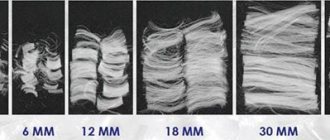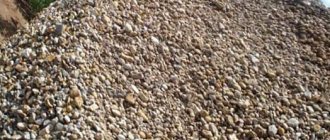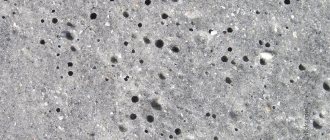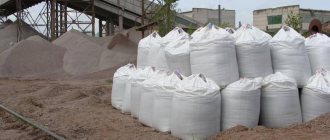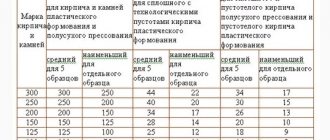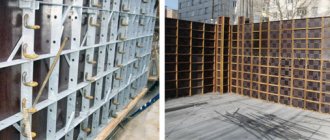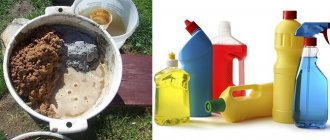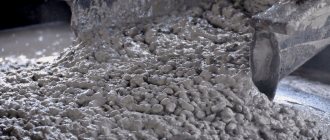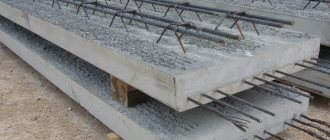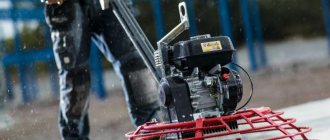What is fiber fiber?
Fiber fiber - fiber is a material of predominantly artificial origin in the form of thin strong fibers with a diameter of 10 - 15 microns and a length of 1.5 to 45 mm
, this additive to concrete mixtures is currently an alternative to steel mesh reinforcement. Fiber fiber is able to interact with any materials, and does not lose its properties even at high humidity, and is not subject to corrosion, unlike metal mesh.
Steel additive for concrete
Steel fiber for concrete consists of pieces of wire. Their length can vary, from 25 to 60 mm, with a diameter from 0.7 to 1.2 mm. The uneven, rough surface of the starting material provides excellent adhesion to concrete ingredients, sand and cement. Metal fiber with curved ends is often used. Although, its form can be any:
- straight;
- arcuate;
- triangular section;
- wave;
- smooth or rough metal structure.
Types of fiber:
Fiber fiber may vary in length and technical properties. This determines the scope of application of the material. It is an alternative to standard reinforcement and welded mesh, which is much more difficult to install and costs more.
Fiber fiber, depending on the filling, can be of the following types:
- Polypropylene fiber.
The material is of a polymer type, is light in weight, and does not enter into various reactions with aggressive substances that are part of building mixtures. It is not subject to destruction at high temperatures, and is also a high-quality heat insulator. Polypropylene filler is used mainly for rough finishing of walls and creating a heated floor structure. - Fiberglass.
The material is flexible and lightweight. This type of fiberglass has relatively good ductility and is also used to create various architectural monuments. - Basalt fiber.
It is used to create concrete structures that operate under conditions of increased loads. The filler is used for the construction of high-strength foundations, pillars, and railway sleepers. This material is also used to reinforce foam blocks to obtain additional strength. - Metal fiber.
The material is produced in the form of thin metal fibers. The use of metal fiber is limited to the construction of structures with high performance characteristics and resistance to low temperatures. The material has greater strength and demonstrates resistance to loads, but at the same time increases the mass of the base due to its high specific gravity. - Asbestos fiber.
It is used primarily for outdoor work, but it is used quite rarely.
Main components of the supplement
The technology for manufacturing additives depends on the type of reinforcing components used. Not all fibers meet the requirements for reinforcement cages.
Metallic and non-metallic threads of different lengths and cross-sections are used as fibers:
- In terms of construction, the greatest effect is obtained from the use of steel fibers, the deformability modulus of which is 6 times higher than that of concrete.
- The use of polypropylene can reduce the risk of cracking during plastic shrinkage of mixtures by 60-90%.
- Glass fiber has low alkali resistance and is used only for preliminary reinforcement in the manufacture of gypsum products or wall blocks made of cellular concrete.
- Basalt fiber is resistant to alkaline processes. The elastic modulus is 15-20% higher than that of glass fibers.
- Asbestos fibers are neutral to the aggressive effects of cements and are characterized by high strength and fire resistance.
A rational choice of additives for concrete reinforcement makes it possible to obtain products that are resistant to mechanical loads.
Fiberglass has low alkali resistance.
Features of the use of fiber fiber:
It is recommended to distribute fiber fiber in concrete evenly throughout the entire volume, thereby increasing the strength of the structure. Due to the low weight of the main types of material, except metal, it does not have a significant effect on the final weight of concrete, but has a positive effect on the characteristics of the product.
Fiber fiber also has other advantages:
- By adding plasticizing additives to concrete, it is possible to achieve a uniform distribution of reinforcing components. This increases the strength of the monolith by 90% compared to the conventional concrete composition.
- Adding fiber to the solution used during plastering eliminates the need to additionally use reinforcing mesh.
- The low specific gravity allows you to avoid excess pressure on the structure and load-bearing elements of the building. At the same time, it is possible to achieve high strength indicators comparable to reinforced concrete structures.
What to look for when buying fiber
Buying low-quality fiber is not only a waste of money, but also a risk of ruining the structure. Concrete structures are manufactured with strength and long service life in mind. The use of low-quality materials can lead to significant losses.
For example, you can find handicraft polypropylene fiber on the market. In appearance, it differs little from factory fiber, but is manufactured in violation of technology. High-quality fiber contains a component called lubricant. It prevents fibers from clumping and promotes their uniform distribution in the solution. The fake fiber will crumple, and the formation of a three-dimensional frame in the thickness of the concrete will not occur, which means that the concrete will not receive the properties that were expected when the fiber was added. By “saving” a few rubles, you can incur significant losses.
To avoid such situations, purchase fiber from trusted manufacturers from reliable suppliers.
Fiber consumption per 1 m3 of solution:
To manufacture a concrete product with the addition of fiber fiber, you need to know the exact amount of the reinforcing component. Consumption is calculated in grams per 1 m3.
It is also important to consider the composition of the building mixture:
- 400-600 g/m3 - in the production of decorative stone and facing compositions;
- 600-900 g/m³ - to increase the strength of concrete products and foam blocks;
- 1000-1500 g/m3 - when creating cement bases, slabs and blocks;
- 1800-2700 g/m3 - for the production of concrete with maximum resistance to external factors and increased loads.
Fiber for concrete: types and features of use
Inclusion of material in the composition
To improve the characteristics of erected concrete and reinforced concrete structures, an additive is used that significantly improves the characteristics of the mixtures. We will talk about an analogue of reinforcement - fiber.
It appeared on our market relatively recently, and immediately won the trust of specialists. Fibers can be of different origins, have different sizes and appearance. Most often, metal fiber is used in construction for concrete.
Description, application
Concrete itself is an excellent building material, which has no analogues in many areas of application. However, it also has its drawbacks: it is susceptible to mechanical damage, especially at the edges and at the junctions of elements. Reinforcement with the specified fiber can dramatically increase its strength and increase its service life.
Fibers are most actively used in construction.
Types of fibers and their characteristics:
| View | Density, g/cm3 | Diameter, microns | Modulus of elasticity, GPa | Tensile strength, MPa | Elongation at break,% |
| Steel | 7,8 | 200-1200 | 190-210 | 500-1500 | 3-4 |
| Asbestos | 2,6 | 0,02-04 | 68-70 | 910-3100 | 0,6-0,7 |
| Basalt | 2,6 | 13-17 | 70-110 | 1600-3200 | 1,4-3,6 |
| Glass | 2,6 | 5-20 | 50-70 | 1400-1900 | 1,5-3,5 |
| PAN | 1,17 | 17-35 | until 11 | 500-600 | 26 |
| Polyester | 1,4 | 8,5 | 730-750 | 11-13 | |
| Carbon | 1,7 | 8 | 230 | 2850 | 0,79 |
| Polypropylene | 0,9 | 15-500 | 7,5-18 | 400-750 | 10-25 |
Areas of application of the combined material:
- when installing floors;
- during plastering facade works;
- in the production of building blocks;
- for making piles;
- during the construction of bridges;
- during installation of concrete road and airfield surfaces;
- in permanent formwork;
- in foundations for impact and dynamic equipment.
Microfiber can be mixed into any mixture that contains cement. If it is added to the solution for reinforcement, it is introduced into the mixture before pouring water (as seen in the photo), then mixed and distributed evenly throughout the solution.
Adding Fibers to the Mixer
This material acquires the following characteristics:
- Elasticity and resistance to mechanical damage are significantly increased.
- Increases wear resistance.
- Water resistance is enhanced.
- Concrete gains better adhesion.
- The durability of structures increases.
- Impact resistance increases.
The advantages of using such fiber include: no need for special equipment for its introduction (filling is easy to do with your own hands), and the additive is budget-friendly.
Types of fiber fiber
Metal fiber
Metal - produced using different technologies.
She may be:
- cut from steel sheet;
The length of such fiber is 20-50 mm, tensile strength is from 510 to 850 N/mm2.
- wave shape cut from wire;
Thanks to the coating, this fiber has excellent adhesion to concrete and a tensile strength of about 3000 N/mm2.
Steel anchor variety
The most commonly used steel fiber is in the form of anchor and wavy fibers.
Steel anchor fiber
It is made from low-carbon general purpose wire (not thermally treated), in accordance with GOST 3282-74, EN 10016-4, C12D2 - C18D2. Length 50-60 mm, diameter 1 mm, tensile strength from 950 to 1350 N/mm 2.
If you reinforce concrete with it, the following results are achieved:
- increase in compressive strength up to 25%;
- increase in tensile strength during bending up to 250%;
- increase in axial tensile strength up to 60-80%;
- increase in impact resistance up to 10-12 times;
- increase in elastic modulus up to 20%;
- increasing the service life of structures;
- increasing frost resistance, water resistance, resistance to cracking, and temperature changes.
Consumption per cube of solution:
- at light loads - 15–20 kg/m3.
- at average loads - 30–45 kg/m3.
- at heavy loads - 45–75 kg/m3.
- in special cases – 75–150 kg/m.3.
Wave steel fiber
This fiber is made from low-carbon and high-carbon steel wire, produced in accordance with GOST 3282-74, GOST 9389-75.
Concrete with wire fiber has the following characteristics:
- increase in compressive strength by 25%;
- increase in tensile strength during bending by 250%;
- increase in axial tensile strength by 60%;
- increased impact resistance by 12 times;
- increase in elastic modulus by 20%.
How much material goes per cube of mixture:
- when installing industrial floors - 20-40 kg;
- when installing floor slabs - 25-50 kg;
- during the construction of bridges, tunnels, roads - 500-100 kg;
- for the construction of offshore structures - from 100 kg.
Important! Use when installing floors allows you to reduce the thickness of the screed.
Basalt fiber
The advantages of this material include:
- Structural strength.
- Long service life.
- Excellent heat resistance.
- Non-flammability.
- Frost resistance.
- Waterproof.
- Resistance to aggressive environments.
- Environmentally friendly.
The basalt variety is used in:
- civil engineering;
- installation of industrial floors;
- structures with increased surface wear (reservoirs, offshore structures, coal storage facilities, etc.);
- construction of bridges, roads (especially when increased resistance to reagents is required);
- construction of tunnels;
- production of paving slabs and decorative elements.
Its consumption in concrete per 1 cubic meter:
- Adding to dry mixtures, mortar for decorative products, foam concrete, aerated concrete - from 0.3 to 0.9 kg;
- Construction of parking lots, roads experiencing light loads, industrial floors - from 0.9 to 1.8 kg.
- Construction of bridges, highways, airfield strips, structures subject to heavy loads, hydraulic structures - from 1.8 to 2.7 kg.
Carbon fiber
This additive is endowed with significant advantages that are often absent from other fiber fibers. It is not subject to corrosion (unlike metal), is resistant to alkalis (which basalt and glass fiber do not have), and has excellent adhesion to concrete (which polypropylene fiber cannot boast of).
The carbon variety is quite expensive compared to the others, but its low consumption (0.6-1.1 kg/m3) and excellent qualities compensate for this.
Application of hydrocarbon material:
- construction of roads and airfields;
- engineering and hydraulic structures;
- floor screed;
- shotcrete;
- small architectural forms, production of concrete products.
Polyamide fiber
The introduction of a polyamide component adds tenacity, elasticity and strength to the solution, improves waterproofing properties, frost and chemical resistance. It can be added to both dry mixtures and solutions with water.
It has a low price and is characterized by low consumption. The average rate of addition to concrete is 0.2 kg per 1 m3.
Fiberglass
It is chopped fiberglass. When the solution is stirred, the additive breaks up into fibers and becomes practically invisible.
Fiberglass helps reduce shrinkage and cracking of concrete. It is resistant to aggressive environments and corrosion. It has good strength, elasticity and resilience.
It is added in the following cases:
- in the manufacture of prefabricated concrete structures;
- in screeds (with a thickness of 10-80 mm);
- in shotcrete;
- as part of various building mixtures.
Important! When concreting, you need to take into account that glass fiber reinforced concrete hardens faster than regular concrete, as well as the poor resistance of glass fibers to alkalis.
The instructions on the packaging, as a rule, regulate the fiber consumption. Usually add 0.3-1.2 kg/m3. If it is necessary to increase the strength of the structure, the fiber content in concrete can be increased.
Polypropylene fiber
One of the most actively used additives. Prolypropylene additive is produced by extrusion. The result is thin fibers of white or yellowish color, 6-18 mm long.
If such a synthetic material is added, concrete becomes less susceptible to destruction, abrasion and cracking.
It can be used:
- during the construction of roads, tunnels;
- in civil engineering;
- in the production of floors;
- in the construction of runways at airfields;
- as part of building mixtures.
Concrete with a polypropylene additive receives additional properties:
- No microcracks or delamination.
- Resistance to aggressive environments.
- Resistance to various types of loads and deformations.
- Increased moisture resistance.
- The formation of dust almost completely stops.
- Durability.
Concrete with a polypropylene additive is 5 times more impact resistant than without the additive.
Polypropylene fiber - consumption:
- construction of structures experiencing severe loads (bridges, highways, etc.) - from 1.8 to 2.7 kg/m3;
- construction of structures with average load - from 1 kg/m3;
- in structures with low load (screeds, cellular concrete) - 0.6 kg/m3.
If you wish, you can watch the video in this article.
Reinforcement of concrete can significantly improve the physical and chemical qualities of the material. Compared to classical types (reinforcement, steel mesh), the use of fiber allows you to obtain concrete that has virtually no disadvantages. In addition, the use of fiber fiber as an additive to the solution reduces labor costs and the overall weight of the structure.
beton-house.com
Fiber fiber in semi-dry floor screed:
The mixture for semi-dry screed is prepared from cement, sand, fiber fibre, plasticizer with a small addition of water. The finished solution is placed along the beacons, and then they begin to directly level the surface of the solution. After this, leave the surface for several days to dry. Only after this can you proceed to the next finishing stage.
This method is suitable for most buildings, mainly office and industrial, except for structures with thin floors. The small amount of water used when preparing the mixture allows installation without excess dirt.
Mixing Methods
Do-it-yourself production of concrete structures using the dispersed reinforcement method involves 3 main stages:
- Preparation of fiber reinforcement.
- Preparation of the composite.
- Molding of products.
When using modifiers, the hardness of mixtures increases. As a result, concrete loses its mobility and becomes difficult to place.
Adding polypropylene
An indispensable condition for obtaining compositions with high strength and stability is a uniform supply of fiber fiber into the concrete mixer.
Work order:
- First, filler, crushed stone or gravel is added.
- Then sand is poured in and mixed dry.
- Without turning off the concrete mixer, the required volume of polypropylene fibers is introduced.
- Cement and water with plasticizers dissolved in it are added.
- Continue stirring until a homogeneous mixture is obtained.
Introduction of basalt
To achieve good adhesion and the required reinforcement effect, the optimal diameter and length of the fibers are selected.
Instructions for making basalt fiber reinforced concrete:
- Sand and crushed stone are poured into a concrete mixer.
- Add the required amount of additive and mix.
- When the unit is turned on, pour water into the mixer.
- Cement is added.
- Continue kneading until the desired consistency is obtained.
If products are prepared on the basis of gypsum or cement-sand mortar, then reinforcement is performed last.
Advantages of using fiberglass for screed:
Fiber makes the base durable, resistant to cracking and high loads. The material is evenly placed in the concrete. Fibers prevent damage to the floor screed during operation, because moisture is distributed evenly in such a base. Frost-resistant material vibrofiber can withstand many cycles of freezing with further defrosting.
Adding fiberglass to concrete saves money compared to using standard metal reinforcement. A semi-dry screed using fiber makes the drying process of the base faster.
Advantages
The widespread use of fiber-reinforced concrete is due to the fact that its physical and mechanical properties are several times better than those of traditional materials. At the same time, the performance characteristics of the products comply with the standards.
Strengthening the screed
To strengthen coatings, it is recommended to use steel fibers with a length of 35-75 mm and a diameter of 0.3-1.0 mm. Heavy concrete of class B25-B35 with a coarse aggregate size of no more than 20 mm is chosen as a cement matrix.
The use of dispersed reinforcement with steel fibers will enhance the performance properties, strengthen the top layer of the base, increase wear resistance, bending strength, crack resistance and durability of the structure.
Prevention of defects
The occurrence of defects in concrete pavements is associated with a violation of the technological process. This is explained by thoughtless savings, non-compliance with the norms and rules provided for this type of structure. Such negligence leads to the appearance of cracks, chips, and potholes on the surface.
As practice has shown, the most effective means for preventing and eliminating defects that have arisen are repair solutions reinforced with various types of fibers. The use of steel or polypropylene fiber makes it possible to avoid the delamination of mixtures during the laying period, and subsequently premature wear and destruction of coatings.
Improved adhesion and water resistance
The water resistance of concrete can be improved using dispersed reinforcement. Since the properties of fiber-reinforced concrete depend on the characteristics of the fibers used, by choosing a material with the necessary characteristics, you can successfully solve the problem.
For example, the use of steel and basalt fibers will increase the water resistance of products several times. To obtain better adhesion of fibers to the cement matrix and uniform distribution of fibers, it is necessary to correctly select the optimal length and diameter of the segments used.
Cost-effective and anti-corrosion properties
The use of fiber for reinforced concrete structures, when part of the frame is replaced with dispersed fibers, allows one to obtain tangible benefits, since the price of modifiers is much lower than the cost of rod reinforcement.
Another big advantage of using steel fiber is that it is protected from corrosion by a dense cement coating.
With proper use of additives, you can obtain an economically useful product with improved performance properties.
Pull the tie along the beacons
If you've already manually leveled a concrete mixture, trying to get it perfectly smooth, then you know how difficult it is to do it with a rule and a trowel. The liquid solution tends to stick obsessively and drag on the tool, which endlessly disrupts the geometry of the created plane. But the addition of polypropylene fiber will bring significant relief to this process. When smoothed, the viscous solution becomes surprisingly docile and workable, as professional concrete workers say. The plasticity of the solution increases noticeably, and now it will be much easier for you to create a perfectly smooth surface along the beacons. However, for this you can also use special additives called plasticizers.
